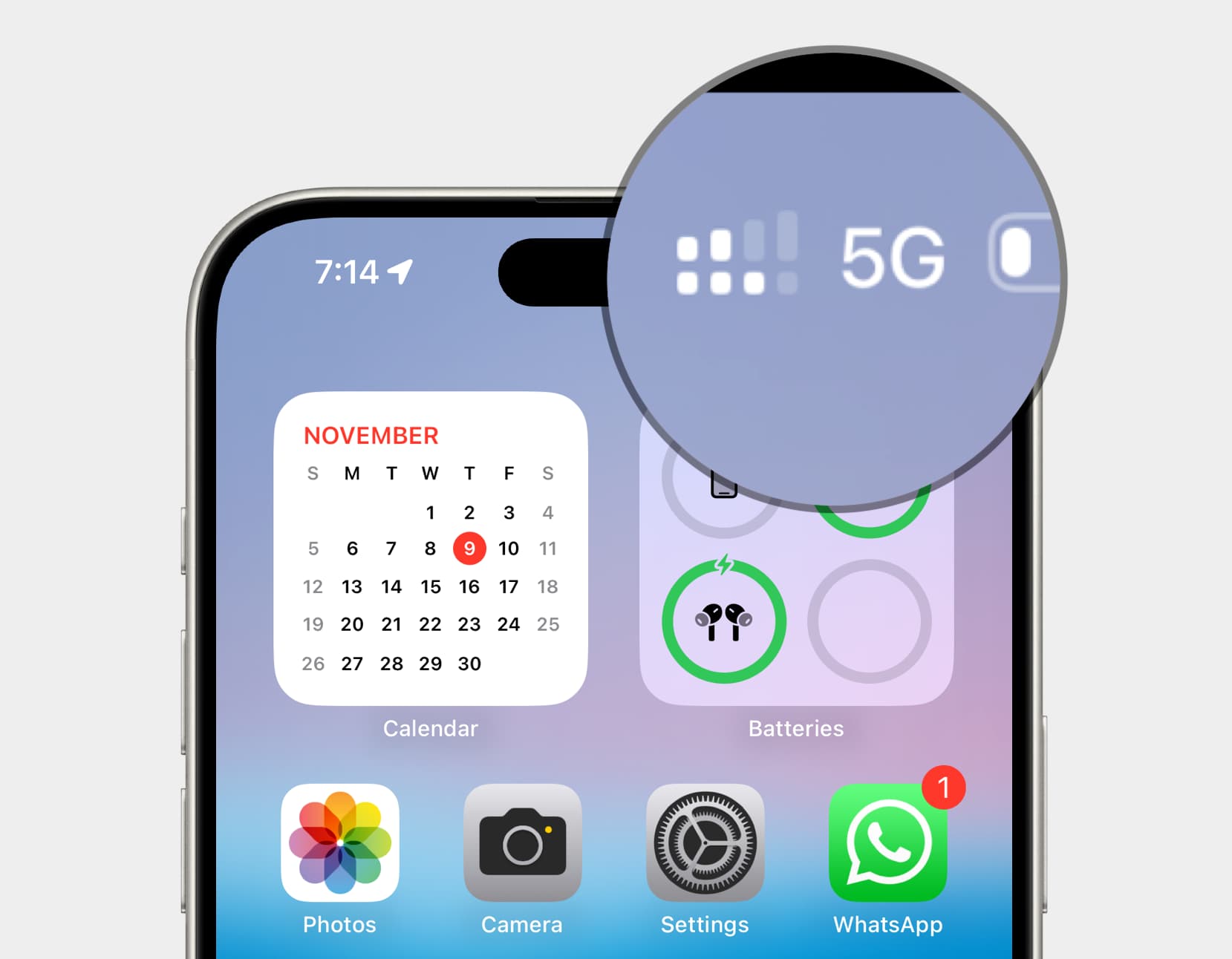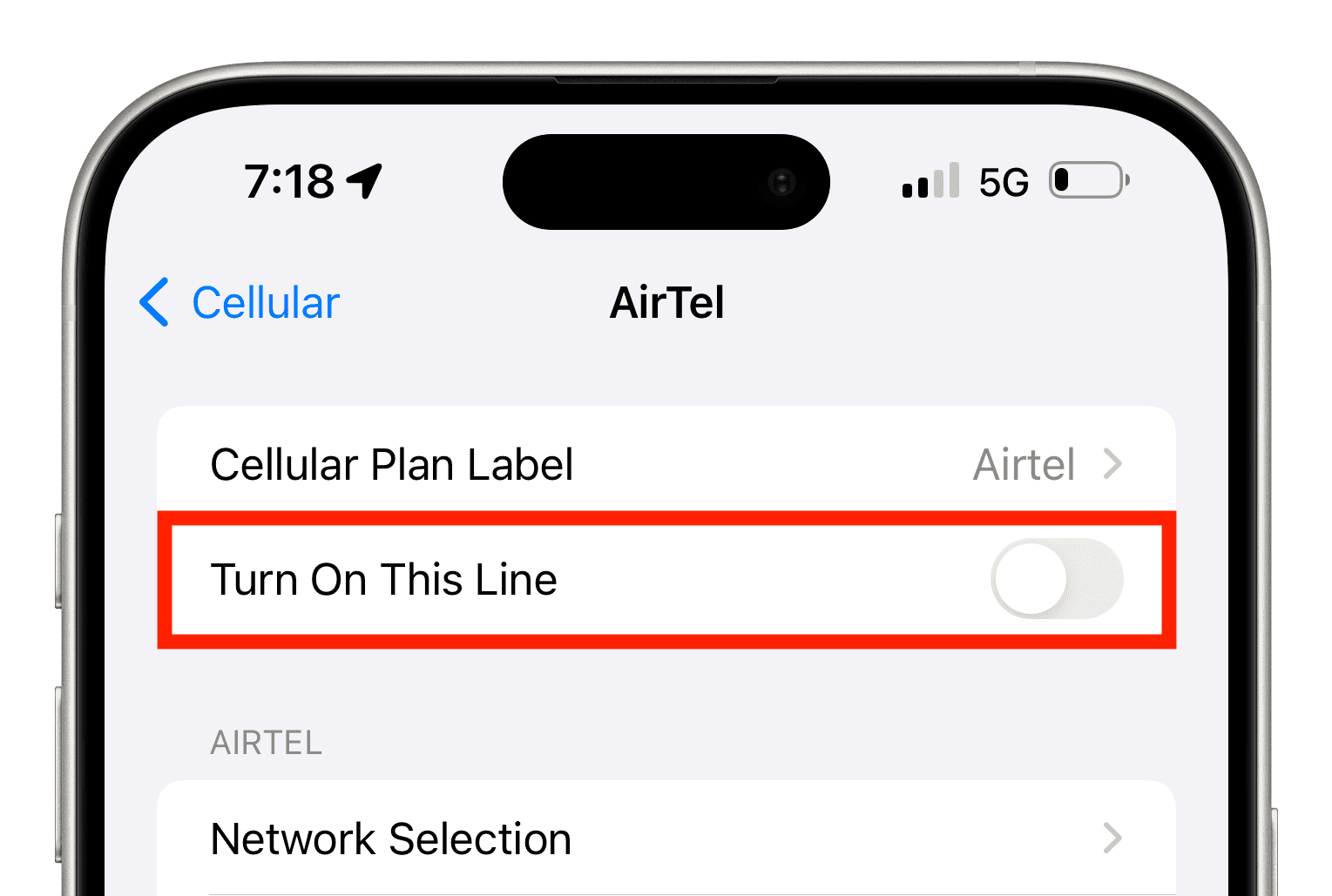In this troubleshooting guide, we outline solutions to fix call issues on your iPhone and help you restore effective communication.

Note: The solutions listed here will only help if you’re not receiving calls at all. If the calls are coming through, but you don’t hear the ringtone, we have a separate tutorial to address that.
1. Toggle Airplane mode On and Off
This is the first thing you should do when facing phone call or cellular data problems. Open Control Center, tap the Airplane icon, wait for 15 seconds, and tap it again. Your phone will reconnect to cellular services, and then you should be able to receive phone calls.

2. Make sure you have cellular coverage
Look at the signal bar in the top right of your iPhone, and if your connection shows low or unavailable, move to an alternate location, and hopefully, your phone will latch on to a signal.

Running a manual network selection can also help. To do that, go to Settings > Cellular > Network Selection and turn off Automatic to force your iPhone to do a signal search. Next, tap your carrier’s name when and if it appears.
3. Restart your iPhone
This is an essential solution if your iPhone is not receiving phone calls. Turn it off, wait a minute, and power it back on to resolve the issue.
4. Check your mobile data plan
If you have a cellular signal but still can’t receive calls, it may be because your carrier has suspended outgoing and incoming calls on your SIM card, as you have not paid your postpaid bill, or your prepaid recharge has expired. Use your carrier’s app or website to check your plan’s remaining balance and validity.
5. Deactivate Call Forwarding
You or someone with access to your iPhone may have switched on Call Forwarding and forgotten about it, which results in incoming calls on your number going to another line. Go to iPhone Settings > Apps > Phone > Call Forwarding and make sure it’s turned off.
6. Check your block list
Did you block an annoying number or friend? If so, you won’t receive phone calls, FaceTime calls, emails, or texts from them. To be sure, head over to iPhone Settings > Apps > Phone > Blocked Contacts and see if their number or name is listed here. If it is, swipe left on their entry and tap Unblock. Now, you’ll receive incoming calls when this person tries to reach you.
7. Turn off Silence Unknown Callers
If enabled, your iPhone can automatically silence all calls from numbers that are not saved to your contact. You won’t receive incoming call alerts for such unknown calls. If you accidentally enabled this, you may miss calls from people such as delivery drivers or customer care representatives. To change this, go to iPhone Settings > Apps > Phone > Silence Unknown Callers and turn it off.
8. Deactivate third-party spam call management apps like Truecaller
Using Truecaller or similar call screening apps on your iPhone may cause you to miss incoming calls. You just won’t see the call on your phone screen, but it will appear as a missed call notification on the Lock Screen and in the Recents section of the iOS Phone app.
To fix this, go to iPhone Settings > Apps > Phone > Call Blocking & Identification and turn off all the switches for Truecaller or other apps you see here. After this, you won’t miss incoming calls on your iPhone from unknown people.
9. Turn off Wi-Fi Calling
On some occasions, Wi-Fi Calling, which is meant to help when your cellular signal is low, may lead to call failures. Go to iPhone Settings > Apps > Phone > Wi-Fi Calling and turn it off.
10. Connect to cellular data or Wi-Fi for VoIP calls
If you’re not receiving calls on WhatsApp, Facebook Messenger, Telegram, or other VoIP apps, ensure your iPhone is connected to cellular data or Wi-Fi.
11. Update third-party calling apps
You may also miss calls because of bugs if the app has not been updated in a long time. So, head over to the App Store and download the latest version of WhatsApp, Telegram, Zoom, or the calling app you use.
12. Try turning off the second SIM line
If you use two or more SIM cards and fail to receive calls on one of the lines, go to iPhone Settings > Cellular > pick the other SIM card and toggle off the switch for “Turn On This Line.” Then, check to see if you can receive incoming phone calls on the remaining active SIM.

13. Check the news to see if call services are temporarily restricted in your area
Depending on the country you live in, local authorities may temporarily suspend cellular services entirely or just allow SMS texts and not phone calls or internet during uncertain times. Check the news or social platforms like X to stay updated.
14. Check the carrier’s downtime
On rare occasions, your local cell tower may go offline, or the carrier may face a major outage. Ask your neighbors or contact customer support to check and see if this might be causing your call issues.
15. Reseat the physical SIM card
If your iPhone uses a physical SIM card, eject it, wipe it carefully with a soft cloth, and reinsert it. Now, try making a call and see if it has done the trick.
Tip: You can also use this SIM on another phone to see if it works.
16. Update your iPhone
Incoming calls may not work because of bugs in iOS. Go to Settings > General > Software Update and install the latest version of the operating system available for your device.
17. Reset network settings
Lastly, this is a very important solution that you should follow if all the above tips have failed. Resetting your iPhone network settings should resolve most issues related to carrier phone calls, texts, and mobile data.